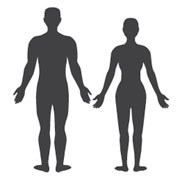« Prev Next »

Genomics Enables Scientists to Study Genetic Variability in Human Populations

Thinking about population genetics often brings to mind visions of animals in the wild being swept along by the tide of natural catastrophes, soil depletion, or predation. However, over the past ten years the field of population genetics has undergone major renovations because of recent advances in gene sequencing and screening technologies. These technological innovations have allowed scientists to tackle bigger and broader questions related to population trends, and to study genetic variation on a much broader scale than ever before possible with older methods, such as test crosses, random sampling, and field work. Today, discoveries can be facilitated by the ever-expanding field of genomics, which is the use of large databases for the purpose of studying genetic variation on a large scale across many different organisms.
What is genomics?

Until recently, the term genome was used to describe the complete set of chromosomes that made up a given species. Today, scientists use the term genome to refer to the complete set of DNA sequences derived from each chromosome of a given species. Genomics is a relatively new and ever-expanding field dedicated to the study of defining genomes in this more specific way.
The direct analysis of the genome of an organism, or the genomes of a group of organisms, is now possible through advances in the efficiency of DNA sequencing and large-scale genetic screening. These new high-throughput methods allow researchers to collect vast amounts of information about genetic variation in very short periods of time.
How many genes does it take to build a human being?
How can we study human genetic variation?
Humans can also be the focus of population genetics studies, as they too have been subject to the forces of change over long periods of time. Recently, the DNA sequence of the entire human genome was deciphered in a massive effort called The Human Genome Project (HGP). This project sequenced the DNA of each human chromosome from end to end, determined the DNA sequence of every human gene, and mapped the precise location of every human gene to a particular region of a human chromosome.
Variation in the human genome: SNPs
After the completion of the HGP in 2003, researchers began to pinpoint locations within the genome that varied among individuals. These scientists discovered that the most common type of DNA sequence variation found in the human genome is the single nucleotide polymorphism (SNP, pronounced "snip"). There are approximately 10 million SNPs in the human genome.
A worldwide effort known as the HapMap Project is mapping SNPs and other genetic variants in human populations around the world. By mapping the distribution of SNPs among different human populations, researchers can begin to learn which types of variation are most common in certain regions of the world. This information will help explain human origins and disease risks as well as how they relate to environmental conditions, both past and present. To date, the HapMap project has identified over 3.1 million SNPs across the human genome that are common among individuals of African, Asian, and European ancestry.
The HapMap database has also helped foster a new type of research in personalized medicine called the genome-wide association study (GWAS). With these studies, the distribution of SNPs is determined in hundreds, or even thousands, of people with and without a particular disease. Comparisons between diseased and non-diseased groups of individuals help determine which SNPs co-occur with disease symptoms. With this information in hand, scientists can carry out statistical analyses to help predict whether a certain SNP is associated with a specific disease, with the hope of identifying individuals who may be at risk.
Genomics and biological discovery
Further Exploration
Key Questions
eBooks
This page appears in the following eBook





















